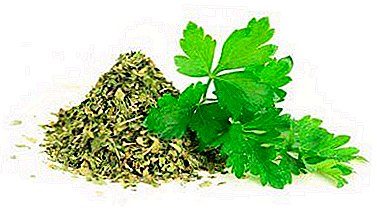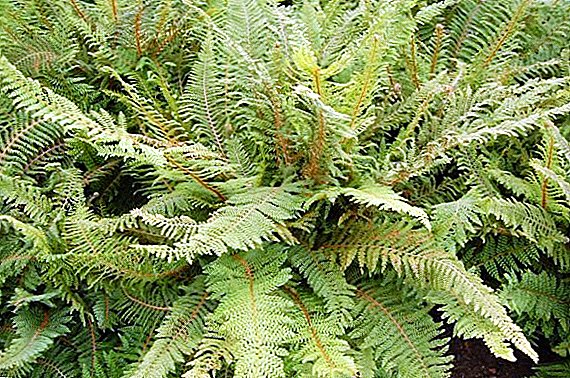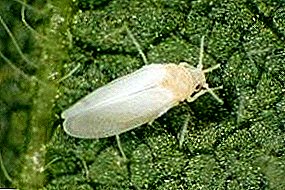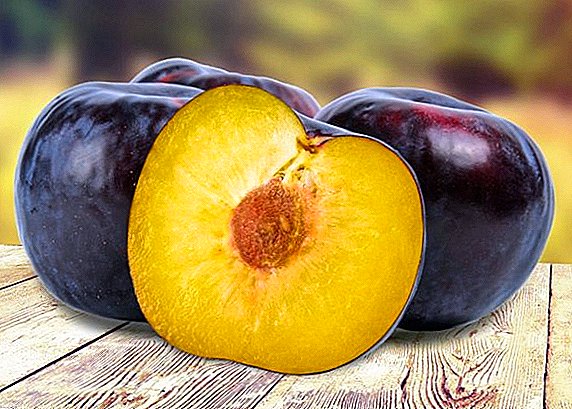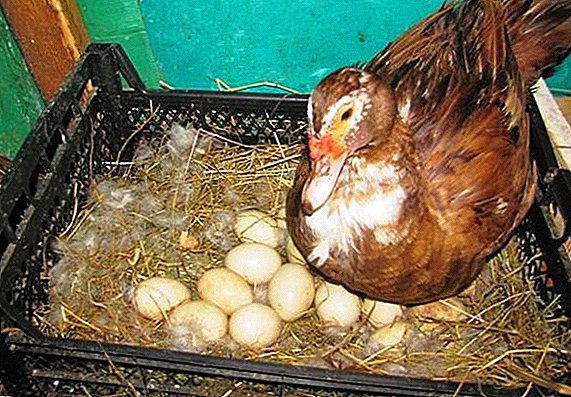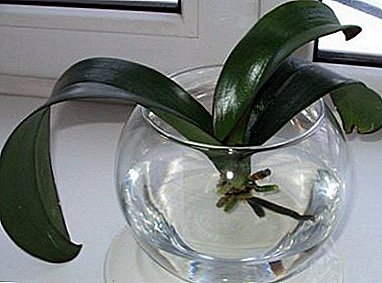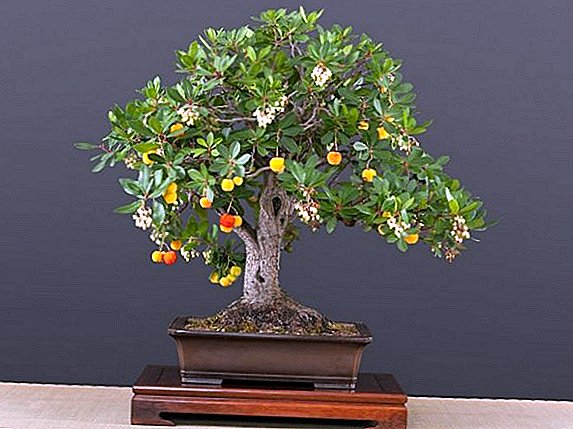 The strawberry tree is a wonderful culture for bonsai art lovers. Strawberry grown in a pot, impresses with its decorative qualities. He will not just decorate your room with exotic notes, but will certainly give you a good mood.
The strawberry tree is a wonderful culture for bonsai art lovers. Strawberry grown in a pot, impresses with its decorative qualities. He will not just decorate your room with exotic notes, but will certainly give you a good mood.
We will acquaint you with how to grow a strawberry tree at home and what care measures he will need.
Strawberry tree: what is this miracle
Arbutus (strawberry, arbutus) is an evergreen plant from the heather family, which is a low tree or shrub. On average, strawberries grow up to 3-5 meters in height, and some representatives of the species can reach the mark of 12 meters, which may take up to 50 years.  In the wild, it grows on forest edges, uplands and stony slopes of Western Europe, the Mediterranean and Tyrol, as well as in America and Mexico. In culture, the strawberry tree can be found on the streets and parks of many European cities.
In the wild, it grows on forest edges, uplands and stony slopes of Western Europe, the Mediterranean and Tyrol, as well as in America and Mexico. In culture, the strawberry tree can be found on the streets and parks of many European cities.
Did you know? The Strawberry Tree (Madrono in Spanish) gave the names of the village of El Madrono and the municipality of Navas del Madrono, which are located in Spain. Strawberry is depicted on their coat of arms.
The smooth bark covering the trunk of a strawberry tree is colored in reddish, orange, brown shades. Some species of arbutus (for example, small-fruited strawberries) have one interesting feature: every year they get rid of the barkwhile making a characteristic rustling sound.
The branches have a fancy curved shape. Arbutus leaves are dark green, wide, shiny. White or yellowish flowers resemble jugs, like those of lily of the valley, they are gathered into panicula-inflorescences.
The fruits of the strawberry tree are pitted, round-shaped, with a diameter of up to 3 cm, resembling garden strawberries in smell and appearance, and an exotic fruit to taste. Strawberry berries are covered with small growths from above, and inside contains sweet-sour mealy pulp with a lot of small seeds.  The strawberry fruits are not just edible, but also tasty: they are eaten raw, they make jams, jams, jellies and even spirits. But a tree grown in indoor conditions, can not boast of the same wonderful taste as its counterparts, growing in an open area.
The strawberry fruits are not just edible, but also tasty: they are eaten raw, they make jams, jams, jellies and even spirits. But a tree grown in indoor conditions, can not boast of the same wonderful taste as its counterparts, growing in an open area.
11 species of arbutus are known. In the pot culture most often used is the large-fruited strawberry tree (Arbutus unedo), which can also be found under the name strawberry.
Did you know? In the Mediterranean countries, strawberries along with other trees or shrubs forms low wet forest, which is called "maquis".
Optimal conditions for growing in the house
The strawberry tree has medium frost resistance; therefore, in our lands, cultivation in pot culture sometimes becomes the only possible option to settle at home in the southern handsome.
Lighting
The strawberry tree is a light-loving plant, so at home it will feel good for illuminated window sill. It should be borne in mind that such an arrangement in some cases can be dangerous for a strawberry tree: daytime direct sunlight can cause the plant to leaf burns. If your pet lives on the south side, it will be necessary to nest it on hot days.
If you want to arrange a mini-garden of tiny trees and shrubs in your house, we advise you to pay attention to such plants: larch, Japanese spirea, euonymus, Thunberg barberry, Persian lilac, cotoneaster.
Temperature
Optimum summer temperatures for arbutus - + 18… + 25 ° C, winter - + 3 ... + 10 ° C.  In summer, the strawberry tree is better to create optimal conditions for growing outdoors, placing it on the spot with good lighting and protection from the wind (on the balcony or in the gazebo). The strawberry tree loves fresh air, so the room in which it grows is needed air regularly.
In summer, the strawberry tree is better to create optimal conditions for growing outdoors, placing it on the spot with good lighting and protection from the wind (on the balcony or in the gazebo). The strawberry tree loves fresh air, so the room in which it grows is needed air regularly.
Important! If indoor arbutus blooms, but does not bear fruit, try making artificial pollination by moving the pollen with a brush from a flower to a flower.
Peculiarities of home care
Potted strawberry tree does not cause trouble in the care.
Regular watering
Young plants during the growing season and fruiting need abundant and regular watering, the soil at the same time no need to re-wet much. Watering is done with settled, soft water. Additional spraying will not be necessary, since arbutus is considered a drought-resistant plant.
Important! With a lack of moisture strawberry can shed leaves.
Soil and its feeding
In general, arbutus can grow on any soil: dense or loose, alkaline and acidic. For a strawberry tree, namely cultivation in a pot, suitable universal store mix for indoor plants or the ground from under the woody plants.  To improve the growth of strawberries use nitrogen and potash fertilizers, as well as special fertilizers for heather crops. During the growth period (spring and summer months), feeding with compost or compound fertilizer is carried out every two weeks.
To improve the growth of strawberries use nitrogen and potash fertilizers, as well as special fertilizers for heather crops. During the growth period (spring and summer months), feeding with compost or compound fertilizer is carried out every two weeks.
In winter, fertilizing is done once a month and only if the plant is in a room with a temperature not lower than + 10 ... + 12 ° C.
For bonsai such plants are excellent: laurel, Benjamin's ficus, evergreen boxwood, thuja, Chinese hibiscus.
Pruning
At home, dry, weak and damaged branches should be removed. Forming pruning strawberries usually do not.
Rest period
In winter, Arbutus is more comfortable being in cool room. Thus, the plant can be protected from the ugly elongated growth that can occur at room temperature and lack of light. Also during this period it is necessary to limit watering. 
Home Transplant Rules
Young strawberry plants are transplanted once every two years, and older ones - as needed, when the roots outgrow the pot volume. It is better to do this in spring, in March or April, before the formation of new shoots. When transplanting you should try not to damage the earthen room and the root system itself.
Important! If the soil is regularly fed, the plant can be in the same substrate without transplanting for quite a long time.
Combating possible pests and diseases
If you do not follow the correct mode of watering and re-moisten the soil, brown spots may appear on the leaves of strawberry, which indicates the development fungal diseases. In case of minor injuries, it is necessary to remove the infected leaves, and fungicides will help to solve a more serious problem.
Too acidic soil and lack of iron in it can adversely affect your pet as a disease of chlorosis, in which case you need to use a drug containing this element.
Of the pests strawberry often annoys spider mite, which can be dealt with using a soap solution sprayed on the surface of the leaves. After the procedure, the leaves need to wipe.
If the strawberry tree impressed you with its description, and the cultivation nuances are not terrible, settle it in your home. Beautiful and unusual, it will certainly delight you and surprise your guests.


